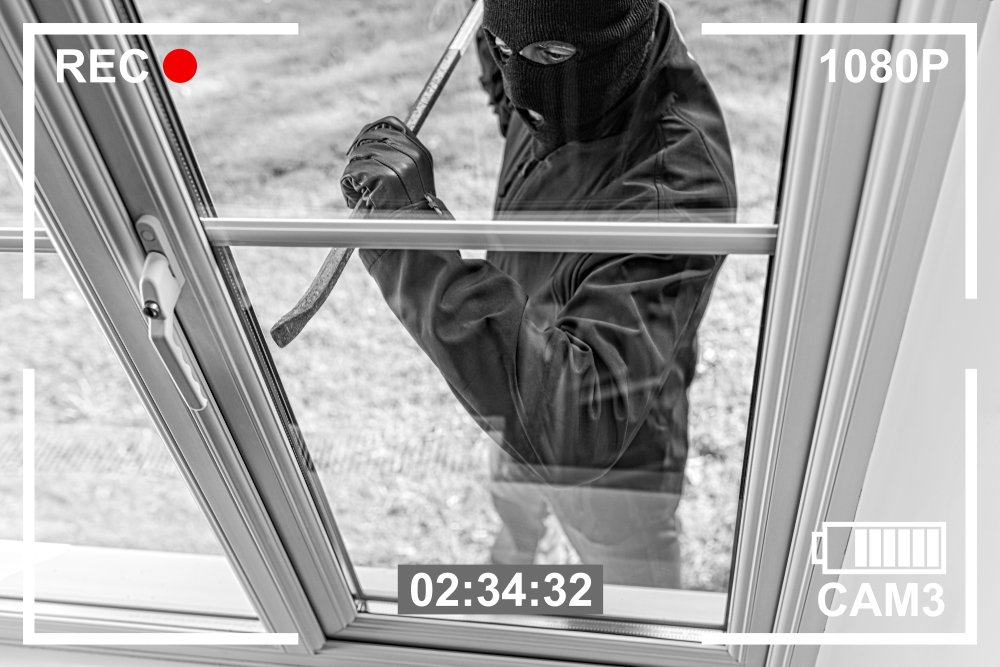ARS 13-1507 is the Arizona statute that defines the crime of second-degree burglary. People commit this offense when they unlawfully enter or remain in or on a residential structure with the intent to commit any theft or a felony. A violation of this law is a Class 3 felony punishable by custody in state prison for almost nine years.
Note that Arizona’s criminal laws divide burglary charges into three different degrees. These are:
- first-degree burglary, per ARS 13-1508,
- second-degree burglary, per ARS 13-1507, and
- third-degree burglary, per ARS 13-1506.
The language of ARS 13-1507 states that: “A person commits burglary in the second degree by entering or remaining unlawfully in or on a residential structure with the intent to commit any theft or any felony therein.”
Examples
- breaking and entering into a home with the intent of stalking the homeowner.
- entering a person’s apartment for the sole purpose of stealing the renter’s computer.
- climbing into a motor home with the intent of raping the person inside.
Defenses
People charged under this statute have the right to contest it with a legal defense. A few common defenses include accused people showing that they:
- did not intend to commit a crime within the residential structure,
- did not “enter” a residential structure, and/or
- were arrested without probable cause.
Penalties
A conviction of second-degree burglary is a Class 3 felony (as opposed to a Class 3 misdemeanor). The crime is punishable by:
- up to eight years and nine months in state prison, and/or
- a maximum fine of $150,000.
In this article, our Phoenix Arizona criminal defense attorneys will discuss what the law is under this statute, defenses available if charged, the penalties for a conviction, and related crimes.

People break ARS 13-1507 when they unlawfully enter or remain in or on a residential structure with the intent to commit any theft or a felony.
1. How does Arizona law define “second-degree burglary”?
People in the State of Arizona are guilty of second-degree burglary if they:
- unlawfully enter or remain in or on a residential property/structure (as opposed to a commercial or non-residential structure), and
- do so with the intent to commit any theft or any felony once inside.i
For purposes of this criminal code section, a person “enters” a structure if he/she penetrates whatever forms a structure’s outer boundary, such as a door, window, or wall. A person can enter a structure, then, merely by inserting a pry bar into a door jamb. ii
A “residential structure” means any structure, movable or immovable, permanent or temporary, that is adapted for both human residence and lodging whether occupied or not.iii
Some examples include:
- homes,
- apartments,
- motor homes and RVs,
- motor vehicles (depending on the facts of the case), and
- boats.
A fenced residential yard, though, is not considered part of a residential structure. A burglary on this type of property is addressed within ARS 13-1506, Arizona’s third-degree burglary statute.
As to the commission of theft or felony to further a burglary crime, note that a person does not have to successfully complete the theft or felony. Defendants only have to have intended to commit such crimes to be guilty under this law.iv
The main difference between first- and second-degree burglary is that the former requires that the defendant possess, during the burglary, a:
- deadly weapon,
- dangerous instrument, or
- explosive.
2. What are the defenses to a charge under ARS 13-1507?
Criminal defense lawyers draw upon several legal strategies/disclaimers to challenge charges brought under Arizona’s burglary laws. A few possible defenses include a lawyer showing that:
- the defendant did not intend to commit a crime.
- the accused did not “enter” a residential structure, and/or
- the accused was arrested without probable cause.
2.1 No intent to commit a crime
People can only commit a burglary under this statute if they entered a residential structure with the specific intent to steal something or commit a felony. This means it is always a defense for an accused to show that he/she entered a property without the desire to commit a crime. Perhaps, for example, a person entered a vacation home because he/she was curious to see how it looked inside.
2.2 No entrance
A person is not guilty under this law unless he/she actually entered a residential structure. Further, entrance requires that a person actually penetrate the outer barrier of the structure.
A defense, then, is for defendants to show that they never entered a home. It is not a crime, for example, if a person got to the front door of a structure, with an intent to steal, but then ran away after getting nervous.
2.3 No probable cause
Police must have probable cause before they can detain or arrest a suspect of a crime. If a person was stopped or arrested for violating ARS 13-1507, and there was no probable cause, then any evidence obtained following the improper stop/arrest could get excluded from the case. This exclusion could result in the dismissal or reduction in charges.

A violation of this statute can result in jail time
3. What are the penalties?
Second-degree burglary is a serious charge in Arizona. A conviction of the crime is a Class 3 felony.vi
Felony convictions under the law are punishable by:
- up to eight years and nine months in state prison, and/or
- a maximum fine of $150,000.
These penalties will increase if certain aggravating factors apply (for example, if a defendant has prior convictions).
If a second-degree burglary charge gets classified as a “dangerous offense,” then the maximum penalty is 15 years in prison.
4. Are there related offenses?
There are three crimes related to second degree burglary. These are:
- theft – ARS 13-1802,
- robbery – ARS 13-1902, and
- trespass – ARS 13-1504.
4.1 Theft – ARS 13-1802
Under ARS 13-1802, theft is the crime where someone knowingly uses or takes someone else’s property or services and does so without lawful authority.
Unlike with violations under ARS 13-1506, violations of this statute are charged as either misdemeanors or felonies depending on the facts of the case.
4.2 Robbery – ARS 13-1902
Per ARS 13-1902, robbery is the offense where people:
- try to steal another person’s property, and
- use threats or force to complete the stealing.
If someone completes this crime with a deadly weapon or a dangerous instrument, then they will get charged of armed robbery, per ARS 13-1904.
As with burglary convictions, convictions under this stature are felony offenses. In particular, a conviction is a Class 4 felony.
4.3 Trespass – ARS 13-1504
Per ARS 13-1504, first degree criminal trespassing is when people either:
- knowingly enter someone else’s property without permission, or
- unlawfully remain on certain pieces of real property without permission.
Note that trespassing is the first element in a second-degree burglary case. If a person then intends to steal something while within a residential structure, or wants to commit some felony, then the police can charge that person with both:
- trespassing, and
- burglary.
For additional help…

Call us for help…
For additional guidance as to Arizona burglary law or to discuss your case with a criminal defense lawyer, we invite you to contact our law firm at the Shouse Law Group. Our attorneys provide both free consultations and legal advice you can trust.
Legal References
- Arizona Revised Statutes 13-1507A. See also State v. Duarte, 246 Ariz. 338 (2018).
- See, for example, State v. Kindred, 232 Ariz. 611 (2013).
- A.R.S. 13-1501(11).
- See, for example, State v. Tubbs, 155 Ariz. 533 (1987).
- See, for example, State v. Rendon, 161 Ariz. 102 (1989).
- ARS 13-1507B.
